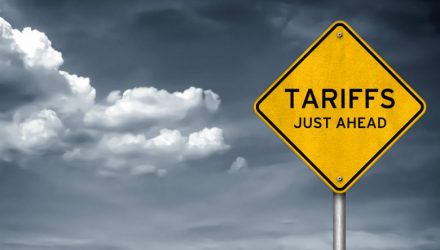At the dawn of the Trump administration a little over a year ago, equity investors were both hopeful and anxious. Hopeful for tax cuts and increased infrastructure spending, and anxious given of the potential for protectionist trade policy. On one hand, fiscal stimulus lifts growth and growth-oriented financial assets, while protectionist trade policies lead to higher costs and lower corporate profit margins, lowering economic growth in the process.
The administration is trying to deliver on both counts. Fiscal stimulus materialized in the form of tax cuts last year, and the recent proposal of substantial steel and aluminum tariffs have sparked trade tensions and spurred market volatility.
How should investors think about tariffs, and how could they affect markets? Here are 3 questions to consider:
How do Tariffs affect growth?
Tariffs have a negative effect on the growth of the countries imposing the tariff as well as the countries they are imposed upon.
Most simply, a tariff is a tax on an imported good, and by raising the price of a good produced overseas, the country enacting the tariff hopes to increase the attractiveness of a domestic good or industry, protect national security of strategically vital industries, or retaliate to another country’s tariff.
There is a benefit for the domestic producer of the tariffed good in lower competition and increased prices; however, the cost to the larger economy far outweighs the benefits. In the case of US companies that utilize steel and aluminum as inputs into their production, those input costs then rise and affect corporate profitability which spreads into the larger economy. The country which the tariff is imposed upon experiences a negative effect on its growth due to lower demand for its goods. That country could then initiate its own tariffs as a retaliatory measure, which reinitiates this dynamic of a negative hit to growth and could spiral into a trade war.
The US makes the first move, where do we go from here?
The signaling effect of the trade restrictions and potential retaliation are more impactful at this point than the economic effect. Steel and aluminum imports account for less than 2% of total US imports, and retaliation from trading partners have largely been symbolic and political. For example, the European Union have threatened retaliatory tariffs on Harley Davidson (headquartered in Milwaukee, Wisconsin, House Speaker Paul Ryan’s home district), Kentucky bourbon (Senate Majority Leader Mitch McConnell’s home state), and Levi’s jeans (headquartered in San Francisco, House Minority Leader Nancy Pelosi’s district).
Things to watch will be:
- Continued NAFTA negotiations. Canada is the largest supplier of steel and aluminum in the US. How will the tariff affect NAFTA negotiations? President Trump has until April 1st to request an extension of a provision, the US Trade Promotion Authority (TPA), that is necessary to implement a renegotiation of NAFTA. That extension has to be approved by Congress, which means that Congress could have more of an influence in moderating the President’s trade stance.
- Signs of retaliation from partners in an economically significant way. Will the US or its trading partners escalate trade tensions? Does China retaliate with a tariff on Soybeans- or in a more extreme fashion, does China slow its purchases of US Treasuries?
Further escalation would heighten negative sentiment and increase the probability of a global slowdown. We are only the in the beginning stages.
What do investors do if tensions escalate?
The past 18 months have been marked by synchronous global growth and rising inflation expectations. The specter of a trade war threatens to reverse that trend of inflation to deflation. Diversification will be important. In an inflation scare, such as in February 2018, bonds and equities under-perform at the same time. In an equity sell-off driven by fears of deflation, fixed income should resume its role as a diversifier to balanced portfolios.

